|
Home Site Map Bulletin Board Site Search
AMERICAN BUDDHA Feb 10, 2019 Who We Are
by Charles Carreon AMERICAN BUDDHA Tara and Charles Carreon are the impetuous spirits who launched American Buddha in 2000, before anyone had a bad word to say about Tibetan Buddhism. Tara broke that taboo by publishing Another View on Whether Tibetan Buddhism is working in the West. Her well-reasoned, thoughtful critique has now been cited in several scholarly papers, and brought forth a response from Dzongsar Khentse that was more of an awkward concession than a reasoned rebuttal, which, in turn, earned him a poetic riposte from Charles and a photoshop caricature by Tara. American Buddha earned a lot of its early fans on the old Tricycle BB, where Tara posted as “Ambu,” and Charles took “Baksheesh” as his moniker. Over the course of a few months, utter chaos resulted from their espousal of bizarre notions like freedom of thought, the right to question the declarations of the lamas, and consideration of the possibility that pedophilia might exist in Buddhist communities. The row became so brutal and anarchic that the Tricycle people took the damn board down, where it has remained ever since. When Tara opened her own BB at American Buddha, it attracted trolls of a higher order, as even the Mukpo Royals, Ashoka and Gesar, were drawn to the nectar, dropping juvenile bombs in the manner of would-be-bad-boy-Bodhisattvas. After endless wars of attrition with trolls great and small, the American Buddha board turned into Tara’s place, where an endless flow of information trickled into the minds of restless Buddhists on the prowl and in the know. For the next fifteen years, American Buddha broke many other taboos, republishing the Shadow of the Dalai Lama in tacit collaboration with Victor and Victoria Trimondi. American Buddha was the first online publication to expose the sexual misconduct of the now-infamous Sogyal Lhakar, the fraudulent origins of the Shambhala “lineage,” and Penor Rinpoche’s questionable “recognition” of celebrity rapist Steven Seagal and Nyingma dominatrix Alice Zeoli, aka “Jetsunma,” as reincarnate bodhisattvas. Tara, in particular, became the go-to person for folks who had a Tibetan Buddhist scandal to vent, so American Buddha published the disclosures about Sakya Trizin by AmLearning, and some of the early revelations of corruption in the Shambhala kingdom by Chris Chandler, who at that time had not left the cult, and was years away from publishing her modern cult-busting tome, Enthralled, the Guru Cult of Tibetan Buddhism. Not content to skewer Buddhist figures, American Buddha published trenchant takedowns of Andrew Cohen, Adi Da (aka Bubba Free John), and a scathing review of Fierce Grace, the spiritual propaganda piece that reimagined Ram Dass’ petrifying near-death experience as a step towards sainthood, notwithstanding that it left him paralyzed, aphasic, depressed, and reliant on marijuana for psychic relief. American Buddha was, in summary, the premium Internet venue for smacking around errant gurus until 2014, when some other things became more important to Tara and Charles, and they let the domain go dark. But five years is long enough to keep silent, and with a good crop of new scandals on offer, American Buddha has returned to the scene of the crime. We’re back to tell the stories others won’t tell, in ways no one else dares. We’ll question hallowed assumptions, sift sense from nonsense, call a spade a spade, and pile up the coals to barbecue those delicious sacred cows. TARA CARREON Tara Carreon was born Tara Lyn Coombs in Waco, Texas to a military couple. Her mother, Beverley, remarried a Southern Democrat named Buddy after her father Raymond was severely injured in a car crash that left him mentally disabled for life. Tara’s mother was a woman of rare beauty who focused on her career as an educator, and became the first female elementary school principal in Mesa, Arizona. Tara grew up in Mesa with her younger sister Danna and brother Layne, and enjoyed a life much like that of other beautiful, slender young blonde girls growing up in a Mormon town in the fifties and sixties. She had a vast number of first cousins, and spent her girlhood in play, school, and church activities. She learned to sew her own dresses, and babysat for tiny payments that she saved to buy the things she wanted. She went to work during high school, bought a car, and took solitary drives into the desert, watching the sun set, and lying on the hood in the night, watching the stars. She wanted to see more of the world, so she went to Israel on a Brigham Young University semester abroad program in 1973. The tour started in London, where the gloomy weather, primitive accommodations, flavorless pub food, and rude Brits made a lasting impression. They went to the Tower of London, and saw the Crown Jewels. They took a whirlwind tour of Italy, France, and Germany, where they visited the Dachau concentration camp north of Munich. Approaching the dreaded destination through forbidding fog, the sense of evil seemed palpable. At the camp, the architecture of oppression chilled the soul – cold walls, grim barbed wire, grimy barracks, intimidating guard-towers. Arriving in Israel put the Dachau experience in perspective, but probably not in the way the trip-organizers had intended. On the drive from Tel Aviv to Jerusalem, Tara noticed what appeared to be concentration camps placed in remote areas. When she asked what they were, she was surprised to learn that native Arab people had been “relocated” to these camps. The thought arose unbidden, that Jews were treating Arabs as they themselves had been treated. Tara and the other students were put up in a hotel in the Old City of Jerusalem, where teachers from the Hebrew University came to give lectures, among them the economist, John Kenneth Galbraith, who explained how the Arab people had been deprived of the land based on the assumption that, because they had lived nomadically, they had not established rights to the land based on possession and occupancy. Other lecturers introduced the idea of Jews as “God’s chosen people,” and the idea was urged that, in the battle of cultures that was being played out before her young eyes, Christians and Mormons were on the same side with Jews, and Arabs were the enemy. Tara was disturbed by this alliance, because she found the Arabic culture – ancient, rooted in the desert environment, artistic and soulful – far more attractive than the Israeli system, powered by money, technology, and a sense of divine entitlement. The Yom Kippur War wasn’t on the academic schedule, but it happened anyway, and Tara found herself in the middle of a country that turned into an armed camp overnight. Her Israeli teachers, doffing military uniforms and spouting anti-Palestinian slogans, were off to fight the foe. Warplanes shrieked overhead, tanks rolled through the streets, the Israelis all hurtling forward to fight the war, while the Arab workers put on a show of inoffensive servility. Tara was horrified as repressive measures were imposed against Arab citizens, and road blocks and checkpoints cut off her access to the Old City where she’d spent precious hours in a world from another time. The other boys and girls on the trip seemed to think it was very exciting — Armageddon was at hand, and they were at Ground Zero – the Holy Land! God was on the side of Israel, and winning was assured! Wow, the summer was really turning out! One night, after listening to other students getting into a party mood about the war breaking out all around them, Tara sat alone in her room thinking. The war was real, she could see that. Her teacher Aviva, a sabra woman who delivered her last class lecture dressed in her military uniform, wearing blood-red lipstick, vowing to destroy the Arab enemies, made it perfectly clear that some people were going to die. Tara saw that political and religious goals were united as a single destructive force, and belief in God was fueling the violence. There was no doubt in her mind -- killing was evil. If religion encouraged killing, then it was wrong. Her teachers had told her that God encouraged killing for a righteous cause, and she rejected this teaching from deep in her heart. The Mormon religion promoted war, so she could not be a Mormon. She went to the Bishop in charge of the trip, and told him she no longer wanted to be a Mormon, because she was not going to worship a God who encouraged killing in His name. The Bishop did not accept her rejection of the Mormon faith, and argued with Tara until the wee hours of the night. The Bishop’s efforts didn’t move her a bit. Tara’s mind was made up, and from that time on, she was an atheist. Right after Tara’s declaration of apostasy, the Israel part of the trip was cut short, and she and the other students were flown to Austria for the remainder of the semester. The Bishop apparently leaked the substance of their conversation, because after that, the other students shunned her completely. Only one girl, who had long hair down to her knees, would even speak with Tara. No one wanted to be her friend, so Tara spent the entire time in Austria by herself. By herself, she took the bus into Salzburg to see the castles and the cathedral where Bach played his organ. By herself, she bought chocolates and roasted chestnuts, she ate apple strudel and drank chocolate. She wasn’t lonely. She loved it. She didn’t want friends. She wanted freedom. One night she went out and looked at the stars and thought, “I am totally free to think whatever I want now, and nobody can tell me what to think.” It was a transcendent experience of freedom of thought, and Tara had no regrets. CHARLES CARREON
Jimmy Carreon’s travails as a young man marked his character for the good, and he dedicated his life to employing people, helping them get the necessities of life, an education, and access to justice. He was a labor contractor and small businessman, and served 12 years as the first Hispanic legislator to take a seat in the Arizona House of Representatives. In the Arizona House, Jimmy Carreon sponsored the bill that put women on juries, investigated patient abuse at the Arizona State Mental Hospital and instituted reforms, and passed the first law that sent drunk drivers to prison for killing people while driving drunk. After his legislative career, Jimmy worked for twenty years in the US Department of Labor, managing programs to provide job training and put the poor to work. During all of these years, Eloise was his faithful companion, backing all of his campaigns and other political activity while working full time as a legal secretary and raising their two sons. Although the family was never affluent, Charles and his brother Aaron were raised to think of life as an opportunity to help the less fortunate. Their father was a strong believer in the power of the mind to overcome all obstacles, so he introduced them early in life to the fact that they had minds. Charles was thus introduced to the nature of mind at age four, and it has given him great joy ever since. Both parents taught their boys that wealth is not merely material, and comes also from living in a free and open society where we can partake of education, culture, and the company of kind, intelligent people. Aaron graduated from Arizona State Law School and retired as the City Prosecutor for the City of Phoenix, a job that he performed with such diligence and humanity that a number of people whom he convicted of crimes later thanked him for showing them the error of their ways. Charles started school at the age of four at the Arizona Language School, a one-room schoolhouse where he and fifty other boys and girls aged 4 - 9 learned Russian, Spanish and English, and were introduced to classical music and anti-communist rhetoric by the rabidly right-wing proprietor, Mr. Fuller. Charles got the lead role in a Russian-language version of the play, Dr. Dolittle, because he had the best memory, and was able to remember all of his lines in Russian. Hamming it up has been a big part of his repertoire ever since. After three years at Mr. Fuller’s language academy, Charles went to Catholic schools through high school. Charles spent sixth through eighth grades at the infamous Linton Hall Military School in Virginia, where around 250 young boys were interned about forty miles west of Washington DC under the watchful eye of a cadre of very crabby Benedictine nuns. Charles’ dad was working for the government in DC, and virtually all of the boys were the children of military folks, diplomats, and bureaucrats. At Linton Hall, Charles learned about racism and suffered a lot of hazing at the hands of younger officers. Charles was in Washington DC during the riots that tore the city apart after the murder of Martin Luther King. Looters plundered the shops while snipers exchanged gunfire with police, martial law was declared, and blocks of shops were destroyed by fire. After the burning was over, Charles’ father took him walking through the destroyed areas, pointing out that the people had destroyed their own neighborhoods, because they acted in anger, injuring their own communities. After getting out of military school, Charles returned to Phoenix to attend high school. At the age of twelve, in the middle of freshman year at Camelback High, Charles ran away from home and went to Haight Ashbury, where he tried LSD, something he’d been interested in for years, since he read an article in Catholic Digest entitled, “With LSD I Saw God.” Charles was curious about God, so much talked about and never seen, but LSD did not reveal His hiding place. For sophomore year, Charles transferred to Brophy Prep, a Jesuit school with the service-oriented motto, “Men for others.” Charles was not a stellar student, but stayed ahead of the crowd, graduating at the age of sixteen in 1971, with distinction primarily in the number of after school detentions he had been required to serve for various disciplinary infractions. After graduating, Charles’ parents sent him to study in Spain for the summer, and then allowed him to travel throughout Europe on a Eurail pass. Charles joined the Children of God fundamentalist Christian cult in Copenhagen, Denmark, and spent several months at a commune in Northern Sweden, washing vegetables, hoeing potatoes, and singing Christian songs, but was still unable to discover God’s whereabouts. To be sure that he came home, Charles’ parents flew to Germany and picked him up at the Children of God center in Essen. Then the three traveled around Europe for a month and returned to Phoenix, where Charles began college as an English major at Arizona State University. TARA AND CHARLES
A few blocks north, Fourth Street and Mill Avenue formed an oasis of homey hipness. In the tree-lined areas of the old town on the north side of the dry river, there were still cheap rentals where the folks who worked in the hip restaurants and shops lived in a truly bohemian style. In the midst of the old neighborhood, a famous peyote dealer named John Livingston plied his trade out of an old house that sometimes had so many cactus buttons in it that you had to walk on a tiny trail through the rooms – all of the rest of the floorspace was covered by thousands of buttons. An incredible restaurant named Earthen Joy served food of unparalleled deliciousness, including a hot carob cake made using a secret recipe that has never been equaled anywhere in the world, and the waitresses were divine beings who made everyone feel special. There was a bookstore called Changing Hands, that has now become an enormous institution, but its founder, a gentle man named Tom who lived frugally and bought wisely, is long gone. There were waterbed shops where the salesgirls would roll around on the beds with you to show you how comfortable they were, a clothing store called Circus, and a biker bar with scary signs on the walls that told people who were afraid of getting beat up to get the hell out before it happened to them. Crazy people with psychic abilities lived in the dry river under the old Tempe bridge, and wandered Mill Avenue during the day, relating with the populace in a friendly fashion. University Avenue, running east-west through the town, was lined on the north side with cheap fast food for the students, some bookstores, and the huge multistory Manzanita residence hall for women students. On the south side, the beautiful campus lawns were kept green with abundant irrigation water that flooded the lawns and turned them into glistening ponds for a couple of days a week, reflecting the tall shade trees. The town was made for bicycling – the broad walkways of the campus went everywhere, the rest of the town had bikepaths and broad sidewalks, and nowhere was very far away. Students lived in a huge warren of apartments east of the campus called “Sin City,” and the assumption was that anything could happen there. In the winter of 1973, two young, innocent people wandered into this indulgent milieu. Tara had returned from Israel and Europe, and was staying in Manzanita Hall, using her friend Debbie’s dorm room, because Debbie was actually living with her boyfriend, a handsome waiter and professional photographer, in Sin City. Charles had recently returned from Europe, and was living with his parents in a home they’d bought in Tempe to make it easy for him to bike to the university, since he was seventeen and had no driver’s license. Tara and Charles met in Humanities 101, a huge class with about 300 students that took lectures in a big lecture hall once a week and then broke up into smaller classes another couple of times a week for discussion and coursework. Tara was captivated by the sound of Charles’ voice when he spoke up during one of the big lectures, and met him as he came walking out the big double doors. Tara was wearing blue jeans that fit her behind but left lots of room around her extremely slender waist, and an apricot-colored embroidered cotton blouse that she’d bought in Israel. She had very long, blonde hair, slender features, and long legs. Charles was wearing cutoff blue jeans, a peasant shirt, moccasin-like shoes with leather laces that constantly came untied, and carried a bag over his shoulder made from an old pair of blue-jeans, stuffed with books, a sketchbook, drawing pens, and artistic paraphernalia. Charles was going with a girl named Vickie whom he’d known from his prep school days because she went to Xavier, the adjacent Catholic girl’s school. Although Vickie had given Charles a fountain pen that he used to write poetry for her, the relationship seemed a little shallow, and he was ready for someone new. Still, he didn’t see much likelihood of getting a relationship going with Tara. She was, after all, very pretty, and worse yet, seemed to be dating Bob, one of the supreme exhibitionists on campus. Although not actually a student, Bob was very tall, very blonde, and very handsome. He ruled the hippie scene at the central fountain, sitting on the concrete edge, his long legs plunged calf-deep into the water, talking, smiling, laughing, emitting Apollo-like confidence and warmth. Charles was, however, able to magnetize some energy of his own, because he improvised abstract tunes on a silver flute, and the sound of a silver flute can carry a long way, floating on those warm winds like seductive silver drops marking a path through space. People would wander towards the fountain, following those silver tones, and when they arrived there, from all four directions, they’d find Charles there, making the sounds. So Charles was able to see Tara in class, and at the fountain, and much to his surprise, she seemed to like him. He gave Vickie back her fountain pen, got his own, and began writing poems in green ink.
Tara was impressed by Charles’ long bike ride. Nobody rode a bike that far in those days, at least nobody she knew. He was pretty skinny, too, and it showed he had more stamina than she would have assumed. He had started giving her poems and little pen-and-ink drawings in green ink. Sometimes he sketched her or other people in a spare style that seemed to catch the essence of things. His poems were strange, semi-surrealistic expressions that hinted he trafficked in mystery, was intimate with the unknown. They studied together. Humanities 101 was an exploratory class, that required them to go to the Music building and listen to soundtracks of classical music, to watch movies for free in big lecture halls, to attend art exhibitions, and write essays. They listened to lectures on existentialism, surrealism, Marxism, different styles of art and literature. It was a fun, rich curriculum that was made to be explored with a friend, and Tara and Charles built their relationship around this exploration of culture, made possible by the creativity of those Humanities 101 professors. They also ate a lot of good meals at Earthen Joy, and spent a few nights together at the home of some friendly hippies willing to encourage a budding romance. Tara turned out to be easy to approach, but hard to hold. Not only did she have a boyfriend in England who was a Rhodes scholar, planning on marrying her when he returned, she was also planning on leaving during spring break to go to Alaska with some fellow who owned a fire truck. Charles didn’t even own a car, so he felt notably outclassed by a fellow with a fire truck. No matter how much they talked about what a strange thing this was to do, Tara insisted she was going, so Charles made plans to go hiking in the Grand Canyon over spring break, and said goodbye to Tara for what he assumed was the rest of his life.
Steve and Charles hiked out of Havasu Canyon and parted company in Prescott. Steve was eager to get back to his apartment, drop a hit of windowpane acid, and put on a John Fahey record. Charles envied the simplicity of his desire, but being a healthy young man, he found ways to occupy his time. He knew a girl who was living in Prescott in a house full of hippies, so he hung out there for a week and spent all of his time either eating in cheap Prescott restaurants (there was a great pancake place and a German buffet that was truly wonderful) or cooking food for the hippies, who really appreciated having someone around to cook dinner. Then he hitchhiked back to Tempe and got ready to be heartbroken for the rest of the semester. Charles was just getting into the really bummed out part of his trip when he got a call from Tara. She was in Tempe. She hadn’t gone to Alaska, because her friend Debbie wouldn’t let her do such a dumb thing. Instead, she had gotten her to smoke pot (which Tara didn’t ordinarily do), stuffed her into her cool yellow Volkswagen, and drove her down to Nogales, Mexico, which in those days was a party town for Arizona kids. Charles couldn’t believe it. He felt like he had been waiting to hang on the gallows, and he got a reprieve. Life was totally fixed. Everything would be fine from now on. And of course, he was right, or mostly right.
|
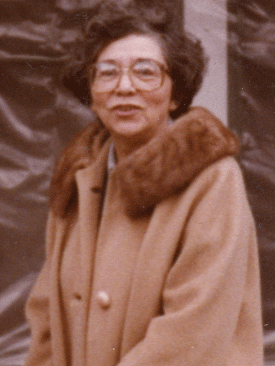
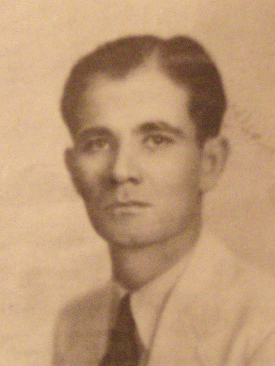 Charles
is the younger son of Eloise and Conrad James Carreon of Phoenix,
Arizona. Eloise was born into the large Ainsa family from Morenci,
Arizona, at that time the home of the world’s largest open pit
copper mine. The Ainsa family hales from Basque Spain, was involved
with mining in New Spain from the eighteenth century, and in the
late 1700’s, the famed explorer Juan Bautista de Anza, who pioneered
the overland route from Northern Mexico to San Francisco, married
into the family. Charles’ father, Conrad James Carreon, was born on
a ranch in the Catalina mountain range north of Tucson, in the early
1900’s, and was orphaned by the flu epidemic shortly after he was
born. He was then raised for a few years by an Italian couple, the
Businis, who unfortunately also died from the flu. His older sisters
didn’t take care of him, and at the age of twelve, after suffering
mistreatment at the hands of some California relatives who had
reluctantly taken him in, young Jimmy, as he came to be known, was
left to fend for himself on the streets of Los Angeles, shining
shoes to earn his food, and sleeping in all-night nickelodeon
theaters. Jimmy became a Golden-Gloves boxer, and turned
professional as soon as he could pass for eighteen, fighting in the
lightweight classes in Northern Mexico, Southern California and
Arizona. After contracting tuberculosis, he spent two years in a
sanitarium in Tucson, and after his recovery, met Eloise on a train
ride from Tucson to Phoenix. The two fell in love on the train ride,
and married after they got established in Phoenix.
Charles
is the younger son of Eloise and Conrad James Carreon of Phoenix,
Arizona. Eloise was born into the large Ainsa family from Morenci,
Arizona, at that time the home of the world’s largest open pit
copper mine. The Ainsa family hales from Basque Spain, was involved
with mining in New Spain from the eighteenth century, and in the
late 1700’s, the famed explorer Juan Bautista de Anza, who pioneered
the overland route from Northern Mexico to San Francisco, married
into the family. Charles’ father, Conrad James Carreon, was born on
a ranch in the Catalina mountain range north of Tucson, in the early
1900’s, and was orphaned by the flu epidemic shortly after he was
born. He was then raised for a few years by an Italian couple, the
Businis, who unfortunately also died from the flu. His older sisters
didn’t take care of him, and at the age of twelve, after suffering
mistreatment at the hands of some California relatives who had
reluctantly taken him in, young Jimmy, as he came to be known, was
left to fend for himself on the streets of Los Angeles, shining
shoes to earn his food, and sleeping in all-night nickelodeon
theaters. Jimmy became a Golden-Gloves boxer, and turned
professional as soon as he could pass for eighteen, fighting in the
lightweight classes in Northern Mexico, Southern California and
Arizona. After contracting tuberculosis, he spent two years in a
sanitarium in Tucson, and after his recovery, met Eloise on a train
ride from Tucson to Phoenix. The two fell in love on the train ride,
and married after they got established in Phoenix.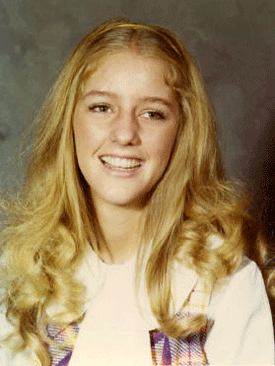
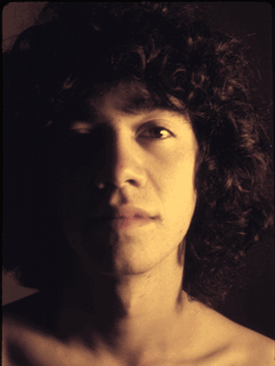 The year was 1973, the place was Tempe, Arizona, the campus of
Arizona State University. The ASU campus was not like campuses
today, where students are all on their individual errands, noses in
cellphones, walking oblivious to the people around them, tuned in to
a world of concepts floating like a digital cloud above their heads.
Not at all. In 1973, the artist of the day was David Bowie, the
primary concern on campus was mating and display, and the area
around the square central fountain was thronged by young people
eyeing each other with mad intensity. There were celebrities on
campus – fabulously dressed young people who moved in a sphere of
ultramontane fashionable display, as hundreds of pairs of eyes were
magnetized by their daily exhibitions. Sexuality and sensuality blew
through the air with the warm wind, caressing everyone with the
promise of delight.
The year was 1973, the place was Tempe, Arizona, the campus of
Arizona State University. The ASU campus was not like campuses
today, where students are all on their individual errands, noses in
cellphones, walking oblivious to the people around them, tuned in to
a world of concepts floating like a digital cloud above their heads.
Not at all. In 1973, the artist of the day was David Bowie, the
primary concern on campus was mating and display, and the area
around the square central fountain was thronged by young people
eyeing each other with mad intensity. There were celebrities on
campus – fabulously dressed young people who moved in a sphere of
ultramontane fashionable display, as hundreds of pairs of eyes were
magnetized by their daily exhibitions. Sexuality and sensuality blew
through the air with the warm wind, caressing everyone with the
promise of delight.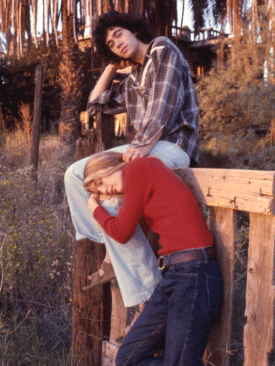 Love
has to conquer obstacles to be real. Distance is an obstacle, and
when Tara wasn’t staying in the Manzanita Hall dorm, she lived way
the heck over in Mesa, famous for its Mormon temple, orange groves,
and white citizenry. One weekend, when Tara was at her parents’
house at the far east end of Mesa, out in the orange groves in fact,
Charles decided to ride his ten-speed bike to see her. It took him
about two hours to get there, on a warm day, and when he arrived,
Tara welcomed him warmly. He got to meet her mom, who was more
beautiful than just about anybody’s mom that he’d ever seen, and
very sweet to him. He met Buddy, her stepdad, who spoke with a
southern accent, was crippled with a bad leg, and spent most of his
time on the porch, smoking menthols and drinking coffee, and was
right decent. He got to see Tara’s bedroom, that had a four-poster
bed that she told him she’d bought with babysitting money, and
refinished with bright yellow-green paint. He got to see the whole
house, that was nicely decorated, with new furniture, wall-to-wall
carpet (a big deal in those days), and a designer kitchen with a
sliding glass door that looked out on a huge backyard with orange
groves beyond. In the far distance to the east, you could see the
Superstition Mountains. Charles had gone way outside his established
limits.
Love
has to conquer obstacles to be real. Distance is an obstacle, and
when Tara wasn’t staying in the Manzanita Hall dorm, she lived way
the heck over in Mesa, famous for its Mormon temple, orange groves,
and white citizenry. One weekend, when Tara was at her parents’
house at the far east end of Mesa, out in the orange groves in fact,
Charles decided to ride his ten-speed bike to see her. It took him
about two hours to get there, on a warm day, and when he arrived,
Tara welcomed him warmly. He got to meet her mom, who was more
beautiful than just about anybody’s mom that he’d ever seen, and
very sweet to him. He met Buddy, her stepdad, who spoke with a
southern accent, was crippled with a bad leg, and spent most of his
time on the porch, smoking menthols and drinking coffee, and was
right decent. He got to see Tara’s bedroom, that had a four-poster
bed that she told him she’d bought with babysitting money, and
refinished with bright yellow-green paint. He got to see the whole
house, that was nicely decorated, with new furniture, wall-to-wall
carpet (a big deal in those days), and a designer kitchen with a
sliding glass door that looked out on a huge backyard with orange
groves beyond. In the far distance to the east, you could see the
Superstition Mountains. Charles had gone way outside his established
limits.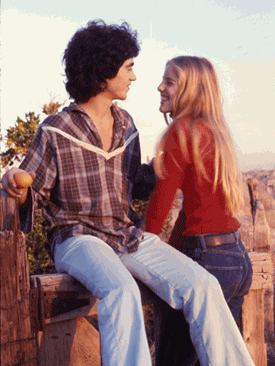 Charles
hitchhiked up to the Canyon rim with his friend Steve Parrish, and
hiked down into Havasu Canyon, and saw the amazing turquoise
waterfalls. While they were down there, they ate some Hawaiian
woodrose seeds, which contain a natural hallucinogen. The audio in
Havasu Canyon is pretty overwhelming. There are basically two sounds
– the omnipresent sound of rushing water emanating from a plethora
of waterfalls, including Mooney Falls around 200 feet high, and the
birdcalls of some species of bird that flies across the canyon
leaving a trail of sharp cries. But after the woodrose effects
started, Charles heard another sound everywhere – “Tara.” Her name
became inescapable. It was emanating from everything, especially the
turquoise water, and he realized that he missed her more than he had
imagined or allowed himself to believe. He felt very sad and bereft,
like he had lost the most precious thing he had ever possessed,
which was in fact what had happened.
Charles
hitchhiked up to the Canyon rim with his friend Steve Parrish, and
hiked down into Havasu Canyon, and saw the amazing turquoise
waterfalls. While they were down there, they ate some Hawaiian
woodrose seeds, which contain a natural hallucinogen. The audio in
Havasu Canyon is pretty overwhelming. There are basically two sounds
– the omnipresent sound of rushing water emanating from a plethora
of waterfalls, including Mooney Falls around 200 feet high, and the
birdcalls of some species of bird that flies across the canyon
leaving a trail of sharp cries. But after the woodrose effects
started, Charles heard another sound everywhere – “Tara.” Her name
became inescapable. It was emanating from everything, especially the
turquoise water, and he realized that he missed her more than he had
imagined or allowed himself to believe. He felt very sad and bereft,
like he had lost the most precious thing he had ever possessed,
which was in fact what had happened.